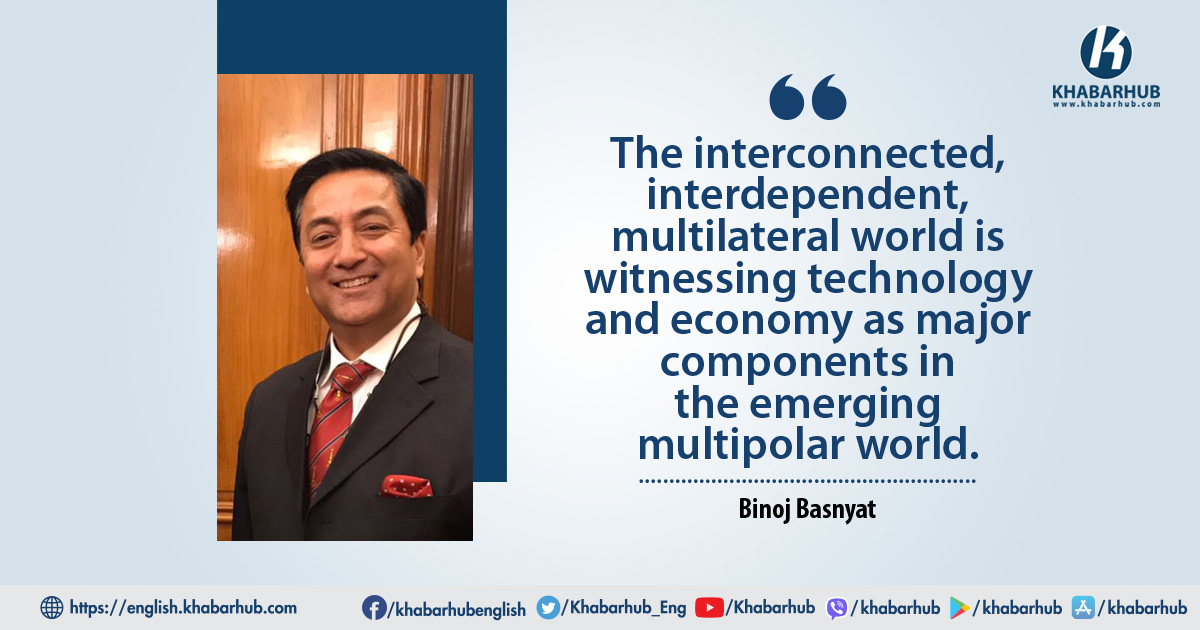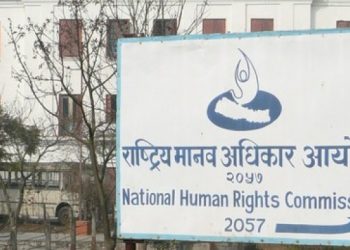Through the Bangkok Declaration 27 years ago, Thailand, as the current Chair of the Bay of Bengal Initiative for Multi-Sectoral Technical and Economic Cooperation (BIMSTEC), is hosting the sixth Summit in August 2024, following a postponement from November 30th, 2023.
Thailand, with influential diplomatic pursuits, is the founder of both the multilateral organization, the Association of Southeast Asian Nations (ASEAN), and BIMSTEC, which carries more significance amid the global power shift in the Indo-Pacific Region (IPR).
This far-sighted diplomatic approach has played a significant role until the first half of the 21st century in Asia and the world.
The two geographies in the IPR will occupy an imperative segment in geopolitics, geo-economics, and geo-security posture amid the prevailing Sino-US rivalry marked by strategic mistrust.
The geographic proximity in the shadow of China and India will hold geopolitical significance.
Is it an instance, yet again for Thailand to propose another geopolitically significant initiative to connect the two sub-regions by linking ASEAN and BIMSTEC, which share common maritime and continental features, in addition to the likelihood of encountering shared geopolitical complexities in the 21st century?
Background:
Five South Asian countries of the South Asia Association for Regional Cooperation (SAARC) and two nation-states, Myanmar and Thailand, of Southeast Asia (ASEAN), are members of BIMSTEC. Multilateralism is the stride in the 21st century for deterring regional and global instability and promoting prosperity.
The ASEAN charter was adopted in November 2007, much before BIMSTEC, which was adopted in March 2022 during the fifth summit.
Strategic because world trade, including world’s energy resources pass through so peace and stability in the region are a precondition for the IPR, uninterrupted energy supplies and international trade between the East and the West.
When it is 56 years for ASEAN, it is 26 for BIMSTEC; one common factor is that both began with humanitarian and economic purposes, now with an inclination to political-security and political-economic domain.
ASEAN is anchored on three community pillars: Political-Security Community, Economic Community, Socio-Cultural Community, with Cross Sectoral Initiatives. BIMSTEC is five-tiered with broadly ten sectors of cooperation and 13 Subsectors, which still can be reorganized.
BIMSTEC, an international organization, is housed with two minilateral organizations with questions for their effectiveness: Bangladesh, Bhutan, India, Nepal (BBIN) with a Motor Vehicle Agreement (MVA) in eastern South Asia as well as South Asia Subregional Economic Cooperation (SASEC) Bangladesh, Bhutan, India, Maldives, Myanmar, Nepal, and Sri Lanka with the Asian Development Bank as the lead financier and development partner.
With ASEAN, a political and economic union centrality, there are 40 such minilateral organizations. ASEAN is directly affiliated with the UN, Shanghai Cooperation Organisation (SCO), Pacific Alliance (PA), Gulf Cooperation Council (GCC), South American Trade Bloc MERCOSUR, Community of Latin American and Caribbean States (CELAC), and Economic Cooperation Organisation (ECO).
ASEAN adheres to the principles of the UN Charter to accelerate economic growth, social progress, cultural promotion, and promote regional peace and stability through abiding respect for justice and the rule of law. APEC and RCEP have been a driving force for international trade.
The union is extending its goals outside just economic and social domains to a shared security regime with a relationship with the European Union and other powers.
One in four people live in the countries that border the Bay of Bengal. The littoral coastal regions of eastern India, Bangladesh, Sri Lanka, Myanmar, Thailand, Malaysia, and Sumatra are home to over half a billion people.
As of 2022, GDP will be approximately more than USD12.5 trillion with a population of 2.2 billion with approximately 9 percent of the land mass. But the important factor is the strategic merit the geography holds for global stability.
The two sub-regions cover most parts of the Indian Ocean and some part of the Pacific Ocean with the South China Sea, Strait of Malacca, Luzon Strait, Bay of Bengal, and the Arabian Sea, with five ASEAN nations and two East Asian countries: Brunei, Indonesia, Japan, South Korea, Malaysia, the Philippines, Singapore, and Taiwan located in the maritime and maintain strategic value.
In the continental, China is bordered by 14 countries: Afghanistan and Pakistan in Southwest Asia, Kazakhstan, Kyrgyzstan, Mongolia, Russia, Tajikistan in Central Asia, and North Korea in Northeast Asia.
Of BIMSTEC and ASEAN nations in the continental 423 km Laos, 2185 km Myanmar, and 1283 km Vietnam have an immediate border in the southeast while 470 Bhutan, 1404 km Nepal, and most parts of 3488 km India border south-south of China. Cambodia borders Laos, Thailand, Vietnam, and the Gulf of Thailand.
The July Foreign Minister’s Retreat has paved the way for the potential of both South Asia and Southeast Asia, which brings about the significance as collaboration mechanisms and the effectiveness for growth and prosperity with regional and global issues of mutual concern were focused on.
The UN, Asian Development Bank, and other financial institutions are well involved in the connectivity of the two sub-regions. Geopolitical issues are both the sub-regions are identical with China and India competition in the realm of US and China rivalry.
Free and Open Indo-Pacific Region (FOIP) Economic interests drive security concerns, which in turn advocate political relationships between nation-states in the region both in maritime and continental.
Diplomacy swings around these issues with a core idea to establish a rules-based international order and consolidate principles such as free trade, freedom of navigation, and the rule of law essentials for global prosperity and stability.
In the maritime, the Bay of Bengal is the sea passage that lies to connect either entering or exiting the Malacca Strait, a shortest 1.5 nautical miles (2.8km) choke point, which is the shortest route from the Horn of Africa and the Persian Gulf to East Asia and the Pacific Ocean.
The Free and Open Indo-Pacific Continental (FOIPC) strategy is Japan’s rationale of “diplomacy that takes a panoramic perspective of the world map,” orchestrated by Prime Minister Abe’s first elucidation in 2012.
The lane annual throughput of approximately 70,000 ships carrying 80 percent of oil transported to the Northeast as well as one-third of the world’s traded goods.
Strategic because world trade, including world’s energy resources pass through so peace and stability in the region are a precondition for the IPR, uninterrupted energy supplies and international trade between the East and the West.
Vulnerable because of the potentiality of political conflict and ecological disaster that is intertwined with social and economic processes.
The rivalry between the US and China, as well as the geopolitical differences between Japan and China, along with the confrontation between China and India, entail precise strategies and economic policies.
Countries with comparable interests have come together to construct collective capacity, a concept originating from ‘Weimar German’ geopolitics revived since 2006 through Japanese initiatives of “Freedom and Prosperity” and formal cooperation between India and America starting in 2019.
Subsequently, the Indo-Pacific Region (IPR) has been integrated into the national security strategies, strategic direction, strategic framework, and foreign policies of numerous countries from North America, the European Union to Asia.
The ASEAN Outlook on the Indo-Pacific (AOIP) of 2019 is one such framework that accepts the basic ideas of the Free and Open Indo-Pacific (FOIP), calling for dialogue, cooperation, inclusivity, and a rule-based framework rather than rivalry.
China perceives it as a concept and a tool to contain China, while Russia, a staunch ally, echoes China’s view as a “closed and exclusive group structure” and calls for an “equal, open, and inclusive Asia-Pacific security system that does not target third countries”.
Of the top five economies in the world, the top three—China, Japan, and India—are in the IPR.
In the territorial domain, India, as well as Malaysia, the Philippines, Taiwan, and Vietnam, have openly opposed the claims, while China has urged its neighbors to remain calm, asserting that there have been no real changes.
The Free and Open Indo-Pacific Continental (FOIPC) strategy is Japan’s rationale of “diplomacy that takes a panoramic perspective of the world map,” orchestrated by Prime Minister Abe’s first elucidation in 2012.
Behind this underlying principle was “peace, stability, and freedom of navigation in the Pacific Ocean are inseparable from peace, stability, and freedom of navigation in the Indian Ocean.
Japan, as one of the oldest seafaring democracies in Asia, should play a greater role—alongside Australia, India, and the US—in preserving the common good in both regions”.
South Asia has been a component in conjunction with Prime Minister Shinzo Abe’s speech in the Indian Parliament in August 2007: “We are now at a point at which the Confluence of the Two Seas is coming into being. The Pacific and the Indian Oceans are now bringing about a dynamic coupling as seas of freedom and of prosperity.”
India, with its “Look East” policy legislated in 1991, infused an “Act East” policy from 2014, officially articulating its foreign policy in 2018 to advance the need to create a “free, open, and inclusive” Indo-Pacific with weight given to the economic progress of the region and the widespread global community.
Bangladesh announced an “Indo-Pacific Outlook” with 15 points which emphasizes a “peaceful, secure, and inclusive” Indo-Pacific in April 2023.
Free and Open is not just at the waters but also continental, along the Himalayas, West Asia, and Central Asia.
Himalayan to South China Sea Dispute China officially unveiled its map on August 28, 2023, which has again brought to the surface territorial disputes and changes in territory.
The ‘Jobs for Resilience’ report on South Asia development updates that South Asia will remain the fastest-growing region in the world with a growth rate of 6.1 percent in 2025. India, which is the linchpin of the economy, is expected to grow at 7.5 percent.
The map lays claim to territories over the entire South China Sea, two disputed regions—Arunachal Pradesh and Aksai Chin—along India and China’s borders, as well as half of Bolshoy Ussuriysky Island, contradicting the 2008 Sino-Russia border agreement.
India led regional protests against the map, which lays claim to disputed territory in the Himalayas, as well as almost all of the strategically important South China Sea.
In the territorial domain, India, as well as Malaysia, the Philippines, Taiwan, and Vietnam, have openly opposed the claims, while China has urged its neighbors to remain calm, asserting that there have been no real changes.
Of the 15 countries bordering the South China Sea (SCS), nine countries (Afghanistan, Kazakhstan, Kyrgyzstan, Myanmar, Nepal, North Korea, Russia, and Tajikistan) have resolved disputes except for Bhutan, India, Japan, Pakistan, Vietnam, and Taiwan.
The formation of the 9-dash line of the SCS, claimed by China, continues with usual activities in the international waters.
The 596 kilometers China-Pakistan border is not recognized by India, so the dispute depends on the resolution of territorial conflicts between India and China, and between India and Pakistan. Disputes with Bhutan depend on the resolution of various territorial conflicts between Bhutan and China.
Potentials of South Asia Though BIMSTEC, one of the largest intergovernmental cooperation frameworks worldwide in terms of population, size of economy, and economic potential, represents the east of South Asia, the potentials of South Asia are strategically important to Southeast Asia.
Defence cooperation potentials, historical cultural affiliations and attachments, as well as economic dependencies, are some of the key areas of cooperation.
BIMSTEC aspires to oblige the subregion towards a ‘prosperous, resilient, and open BIMSTEC or Pro BIMSTEC’ by 2030, while combining the concepts of bioeconomy, circular economy, and green economy to develop high-value products and services that are eco-friendly (BCG economic model) as guiding concepts in each sector of cooperation.
According to a survey titled “The State of Southeast Asia 2024” by the Yusof Ishak Institute, with almost 2,000 respondents across 10 member states, 50.5 percent preferred China if the region were forced to align itself in a major country rivalry.
The ‘Jobs for Resilience’ report on South Asia development updates that South Asia will remain the fastest-growing region in the world with a growth rate of 6.1 percent in 2025. India, which is the linchpin of the economy, is expected to grow at 7.5 percent.
Geostrategic Viability
Due to contemporary geopolitical shifts, the BIMSTEC region has gained more strategic, economic, and commercial importance since its inception.
It will further solidify Thailand’s role as a bridge-builder, transport hub, and business link between Southeast and South Asia, as well as between the Indian and Pacific oceans.
Thailand hosts the 6th Summit after the signing of the Bangkok declaration on June 6, 1997, which aims to deepen cooperation in trade, technology, energy, transport, tourism, fisheries, security, counterterrorism, and disaster management. BIMSTEC and ASEAN link political-economy, political-security, and cultural bonds with connectivity both by land and sea.
Nation-states have complementary strengths and resources, which can be leveraged to enhance cooperation in various sectors such as agriculture, energy, technology, and innovation.
With a combined gross domestic product of US$4.4 trillion in 2022, the region, comprising over 1.8 billion people, holds immense economic potential, offering opportunities for increased trade, investment, and economic growth.
The master plan for BIMSTEC transport connectivity, proposed by Thailand in 2018, along with Southeast Asia transport connectivity, will support both land and maritime connectivity.
It will play a prominent role in enhancing inter-regional connectivity, facilitating efficient movement of goods and people.
Various initiatives such as the Asian Highway, BBIN MVA, SASEC, India-Myanmar-Thailand Trilateral Highway (IMT Highways), Bangladesh China India Myanmar Economic Corridor (BCIM EC), China-Myanmar Economic Corridor (CMEC), and UN Economic and Social Commission for Asia and the Pacific (ESCAP) are working on infrastructure and operational transport connectivity along the regional land transport network as well as other countryside connectivity.
Efforts are underway to connect South Asia to North and Central Asia through Southeast Asia, building upon Intergovernmental Agreements on the Asian Highway, Trans-Asian Railway, and Dry Ports, as well as relevant regional frameworks on transport corridors facilitation.
Promoting strategic connectivity projects such as the 1360 km IMT Highways is another focus. Additionally, the region has distinct advantages and great potential to promote economic integration, political cooperation, and civilizational development among its member states in areas such as trade, investment, technology, tourism, and energy.
The rich and diverse cultural heritage contributes to the eastern civilizational connection.
According to a survey titled “The State of Southeast Asia 2024” by the Yusof Ishak Institute, with almost 2,000 respondents across 10 member states, 50.5 percent preferred China if the region were forced to align itself in a major country rivalry.
Preference for the United States dropped from 61.1 percent in the previous year to 49.5 percent. Approximately 46.8 percent of respondents believe that ASEAN should enhance its resilience and unity to fend off pressures from the two major powers.
Filipinos opposed this trend, with support for the U.S. as a preferred partner growing from 78.8 percent to 83.3 percent since last year, while support for China fell from 21.2 percent to 16.7 percent.
However, US Army Pacific Commander General Charles Flynn noted a continued and steady increase in multilateral and multinational work together.
Economic Diplomacy
Both the “Act East” policy initiated by India and the “Act West” policy by ASEAN are strategic initiatives taken by member states of BIMSTEC and ASEAN to enhance their engagement with the rest of the world.
Both policies aim to deepen economic ties, promote regional cooperation, energy security, and strategic engagement.
Efforts are being made to deepen economic integration through initiatives like the ASEAN-India Free Trade Agreement (FTA) and cross-border electricity trade with Power Grid and associate trade.
While electricity trade accounts for 5 percent of generation, trades in coal and gas amount to 86 percent and 53 percent, respectively.
Twenty-six countries participate, including 11 from Asia, five from Europe, four from South America, and three each from North America and Oceania. Six ASEAN nations (Brunei, Indonesia, Malaysia, the Philippines, Singapore, and Thailand), along with Japan and South Korea, are regular participants from Southeast and East Asia.
Promoting strategic connectivity projects such as the 1360 km IMT Highways is another focus. Additionally, the region has distinct advantages and great potential to promote economic integration, political cooperation, and civilizational development among its member states in areas such as trade, investment, technology, tourism, and energy.
Rise of Defence Diplomacy
The geographic advantage allows defense forces of both regions to serve as key players in regional security and stability. Their cooperation can contribute to maintaining peace and addressing security challenges in the region, thereby supporting economic stability.
Both BIMSTEC and ASEAN recognize and actively engage in defense diplomacy to promote regional stability, strengthen defense cooperation, build mutual trust, and foster regional cooperation.
BIMSTEC engages in various defense initiatives, including joint military exercises, information sharing, maritime security cooperation, and counter-terrorism cooperation, to enhance interoperability, promote cooperation, and build trust among their armed forces.
ASEAN engages with the ASEAN Defense Ministers’ Meetings (ADMM), where defense ministers discuss regional security issues, defense cooperation, and confidence-building measures. ADMM-Plus involves participation from ASEAN’s eight dialogue partners, further promoting dialogue and collaboration.
Efforts are underway to establish a regional security architecture that promotes understanding, trust, and cooperation and is effective in contemporary Indian Ocean Region (IOR) multilateralism.
This includes the ASEAN Regional Forum (ARF), which brings together ASEAN member countries and other key regional players to discuss security challenges and foster confidence-building measures.
The ASEAN Military Attaché Program facilitates defense diplomacy by appointing military attachés to ASEAN member countries to deepen military-to-military relations, facilitate information exchange, and foster defense cooperation.
ASEAN member countries collaborate in Humanitarian Assistance and Disaster Relief (HADR) efforts, sharing expertise, conducting joint exercises, and coordinating disaster response mechanisms. This cooperation enhances the region’s resilience in times of natural disasters and humanitarian crises.
There is a need for a policy shift to focus on the Pacific Ocean region and the Indian Ocean region to stop fueling proxies and to enhance defense cooperation and coordination between Southeast Asia and South Asia, shifting from geopolitical cravings in the Pacific Ocean to a sojourn in the Indian Ocean, avoiding proxy wars.
The Rim of the Pacific Exercise (RIMPAC) 2022, administered by the US Navy’s Indo-Pacific Command, is an example and is held biennially, being the largest international maritime warfare exercise.
Twenty-six countries participate, including 11 from Asia, five from Europe, four from South America, and three each from North America and Oceania. Six ASEAN nations (Brunei, Indonesia, Malaysia, the Philippines, Singapore, and Thailand), along with Japan and South Korea, are regular participants from Southeast and East Asia.
India and Sri Lanka from South Asia also participated, with the likelihood of an increase in participants in the 2024 RIMPAC.
China participated in two exercises in 2014 and 2016, leading observers to contemplate that the US is invigorating a coalition with the aim of containing China’s growing influence. Russia participated only in 2012.
In South Asia, the Indian Ocean Rim Association (IORA) consists of 23 nations and 12 dialogue partners, but its effectiveness has been questioned.
Launched two years after its establishment in March 1997, IORA is a strategic driving concept that requires acknowledgment.
The six priority areas are similar to the goals of RIMPAC, with five ASEAN members, three BIMSTEC members, and Maldives involved. China, the EU, Japan, and Russia are also dialogue partners.
Both RIMPAC and IORA will contribute to effectiveness in the intensifying contestation between China and India, China and Japan, and China and South Korea, as well as trade disruptions caused by Houthi attacks on international shipping, making the western and northern Indian Ocean active geographies.
ASEAN and BIMSTEC defense forces should aim to deepen cooperation in regional security, counterterrorism, prevention of transnational crimes, disaster management, and cybersecurity.
There is a need for a policy shift to focus on the Pacific Ocean region and the Indian Ocean region to stop fueling proxies and to enhance defense cooperation and coordination between Southeast Asia and South Asia, shifting from geopolitical cravings in the Pacific Ocean to a sojourn in the Indian Ocean, avoiding proxy wars.
Conclusion
The interconnected, interdependent, multilateral world is witnessing technology and economy as major components in the emerging multipolar world.
There is less likelihood of a bipolar world as other regional powers will play significant roles in shaping bipolarity.
The priority of alliances and alignment comes at a time when the global environment is being disrupted by war and aggression. Therefore, it is imperative that South Asia and Southeast Asia come together to prevent rivals and competitors from adding fuel to the fire.
Minilateralism is tempting to both sub-regions, as it prefers operative collaboration and unfettered regionalism and is informal and flexible in its nature and characteristics.
If managed effectively, proactive minilateral mechanisms are a good complement to the community-building process of ASEAN and BIMSTEC.
However, risks remain firm with the strategic interests of rival powers and other major powers for their own geopolitical and geoeconomic interests, such as interests in the Mekong sub-region and the ‘Act East’ policy for Southeast Asia and the ‘First Neighbourhood’ policy and ‘Belt and Road Initiative’ in South Asia, in addition to the strategic interests of the two sub-regions.
It will be a region that can be an element for preventing hot war, bringing civilizational attachments together, and serving as an economic passage to East Asia, Africa, and Europe. The Chair of ASEAN in 2014, Laos, should be invited to the upcoming BIMSTEC summit.
During September 2023, militaries of ASEAN began their first-ever joint exercises in Indonesia.
ASEAN countries have participated in multinational defense drills before, but these are the first featuring just the Southeast community, which is striving for discernment of irrelevance on major regional issues such as the turmoil in Myanmar and disputes in the South China Sea.
Beijing’s capitalism without democracy has rolled out new Global Community of Shared Future initiatives, while Washington is building like-minded coalitions like the Quadrilateral Security Dialogue, AUKUS, and partnership for Global Infrastructure and Investment.
ASEAN and BIMSTEC defense forces should aim to deepen cooperation in regional security, counterterrorism, prevention of transnational crimes, disaster management, and cybersecurity.
A broad agreement on the importance of creating crisis response mechanisms to ensure coordination in different contingencies for united voices focusing on Humanitarian Assistance and Disaster Response (HADR) is also necessary.
At the upcoming summit, BIMSTEC leaders should use the platform to discuss critical issues like food, public health, energy, and financial security.
Trade and economic cooperation will also be at the center of deliberations related to digital payment systems and trade settlements.
Other important topics include the BIMSTEC Grid Interconnection, agriculture technology, cultural cooperation, youth exchange, and diplomatic training.
As other groups such as the G20 and G77 are forming, BIMSTEC and ASEAN unity for a new Asian Order will have an impact on peaceful transformation to an asymmetric new world order, as remilitarization of countries in South, Southeast, and Northeast Asia in recent years is mounting.
The implications of militarization for political development and regional stability will have to be assessed, while Asian nations’ military influence over politics, society, material, and the economy is gradually accumulating.
The global system is transitioning with intensifying institutional development amid mounting strategic competition in the Indo-Pacific Region (IPR).
Beijing’s capitalism without democracy has rolled out new Global Community of Shared Future initiatives, while Washington is building like-minded coalitions like the Quadrilateral Security Dialogue, AUKUS, and partnership for Global Infrastructure and Investment.
The aftermath is that ASEAN and BIMSTEC face challenges to their status as hubs for multilateral diplomacy.
Choices will be there, but the common preference for all is peace and no war.
(The author is a Strategic Analyst, Maj. General (Retd) of the Nepali Army, and is associated with Rangsit University, Thailand.)









Comment